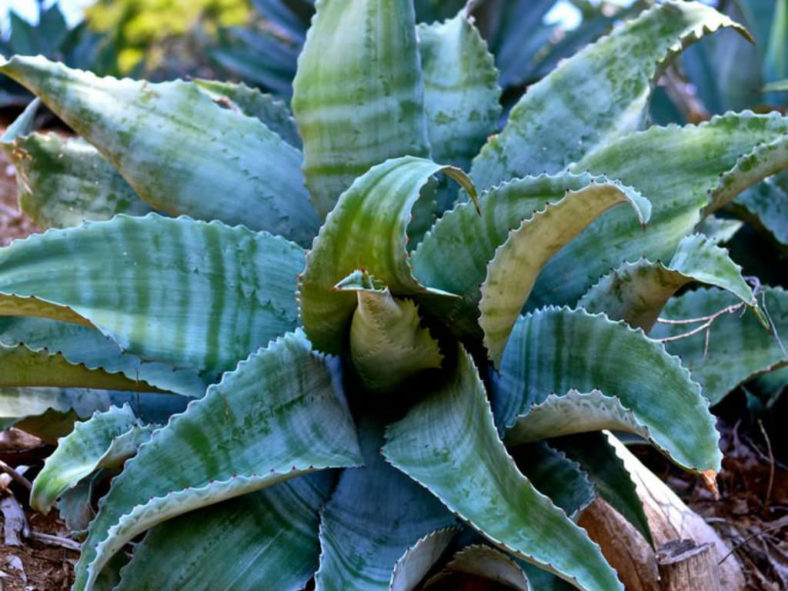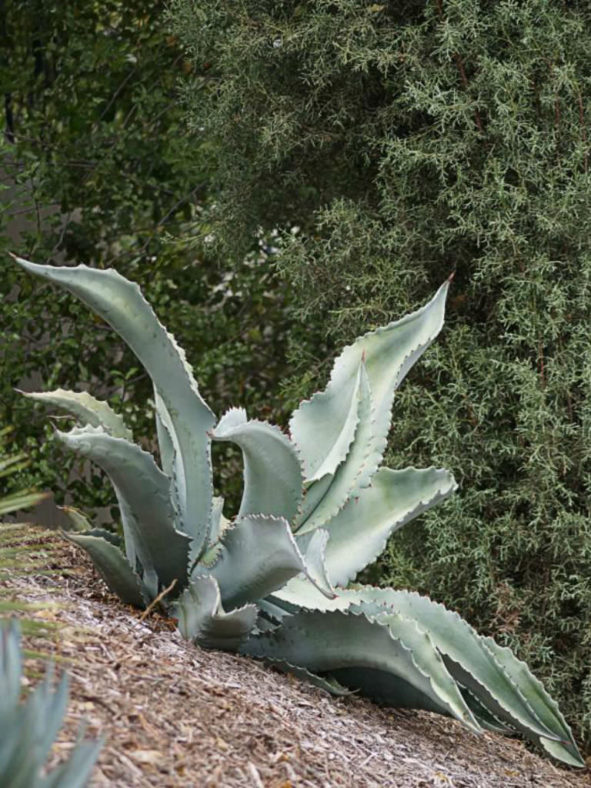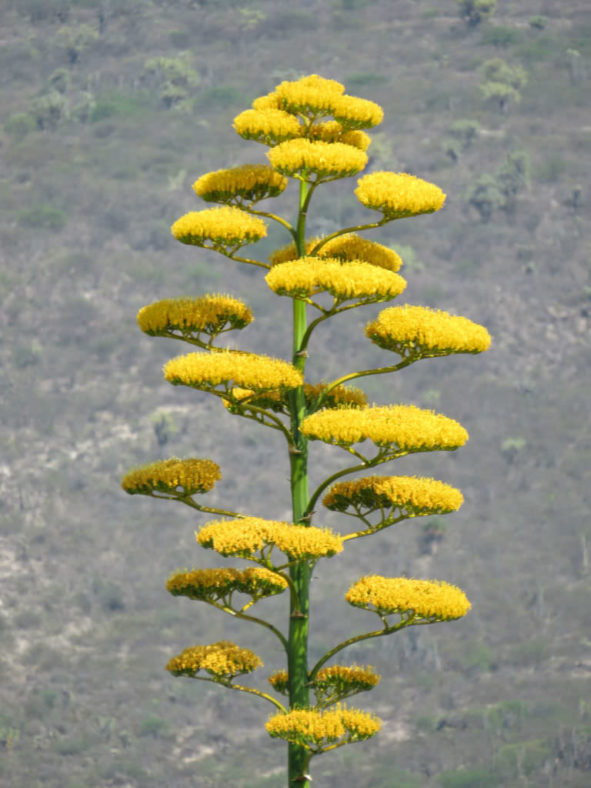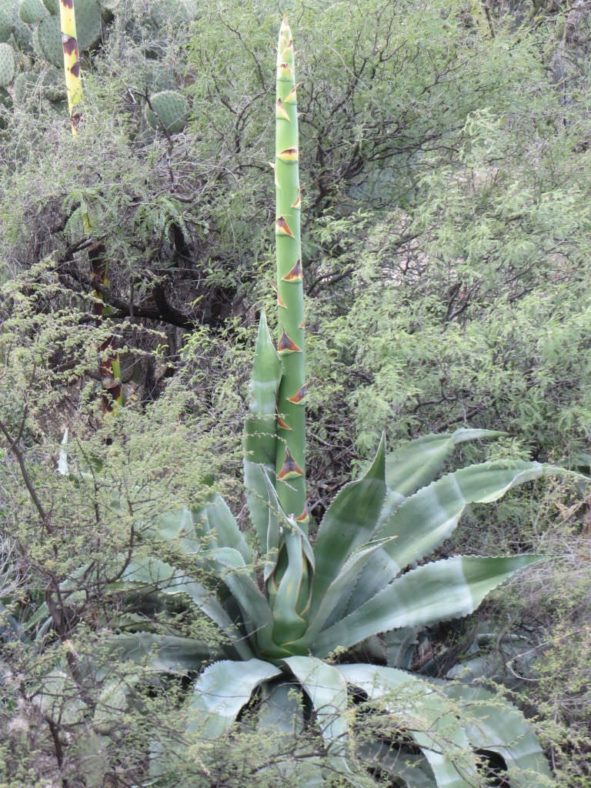Scientific Name
Agave marmorata Roezl
Common Name(s)
Marbled Agave, Marble Leaf Agave
Synonym(s)
Agave todaroi
Scientific Classification
Family: Asparagaceae
Subfamily: Agavoideae
Genus: Agave
Etymology
The specific epithet "marmorata (mar-mor-RAY-tuh)" means "marbled, covered or encrusted with marble" and refers to the marbled pattern seen on the leaves.
Origin
Agave marmorata is native to Mexico (Oaxaca).
Description
Agave marmorata is an attractive succulent that forms a stemless, usually solitary rosette of convoluted, deeply serrated leaves with a pointed tip and sharp spines along the margins. The rosette slowly grows, reaching up to 6.6 feet (2 m) in height and 8.2 feet (2.5 m) in diameter. The leaves are dark green to blue-green, often with pale blue and gray-green stripes. They can measure up to 4.3 feet (1.3 m) long and 1 foot (30 cm) wide.
The mature rosette produces a tall flower spike with clusters of golden yellow flowers. The spike can reach up to 23 feet (7 m), and the rosette dies after flowering.

How to Grow and Care for Agave marmorata
Light: Like all Agaves, this plant requires full sun to partial shade. If growing A. marmorata indoors, choose a bright, sunny window with as much sun as possible. From spring to fall, it loves going outside.
Soil: A. marmorata will tolerate most soils as long as they have good drainage, but it prefers sandy or rocky soil.
Hardiness: During the growing season, it likes warm temperatures, while in winter, when resting, this succulent enjoys cooler temperatures. A. marmorata can withstand temperatures as low as 25 to 50 °F (-3.9 to 10 °C), USDA hardiness zones 9b to 11b.
Watering: From spring to fall, water thoroughly when the soil becomes dry. In winter, water sparingly about once a month. Plants in containers require more frequent watering than those in the ground.
Fertilizing: Give your A. marmorata a small amount of fertilizer in the spring for the first two years. Established plants seem to take care of themselves.
Repotting: If you notice your A. marmorata becoming pot-bound, repot it with fresh soil in a new pot slightly larger than the old one. Give the plant a week or so to readjust before you water it again.
Propagation: Since it can take years to produce seeds, A. marmorata is usually propagated by offsets. The best time to remove the offsets is spring and summer. Spring is ideal for sowing seeds.
Learn more at How to Grow and Care for Agave.
Toxicity of Agave marmorata
A. marmorata is not listed as a toxic plant, but it may be mildly poisonous to children and pets.
Links
- Back to genus Agave
- Succupedia: Browse succulents by Scientific Name, Common Name, Genus, Family, USDA Hardiness Zone, Origin, or cacti by Genus
Photo Gallery
Click on a photo to see a larger version.


